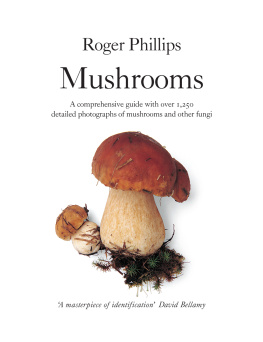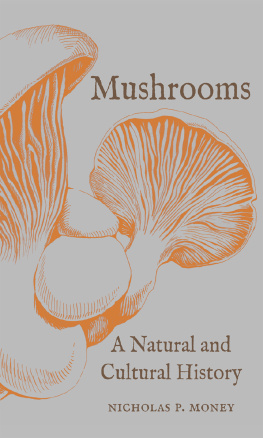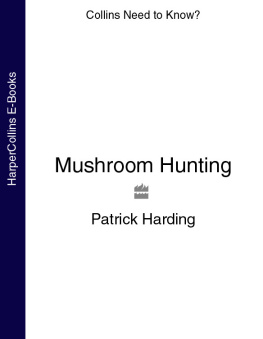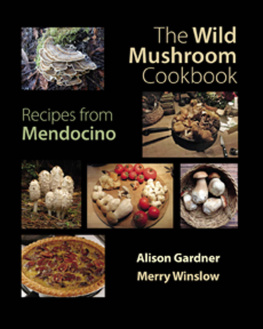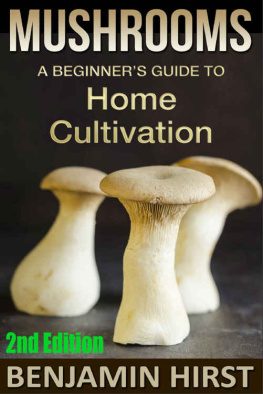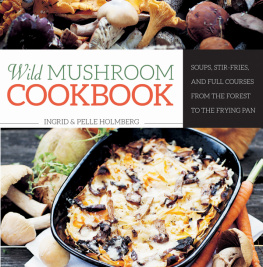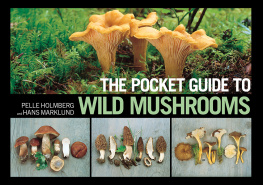
2017 Quarto Publishing Group USA Inc.
Text 2010, 2017Gary Lincoff
Revised edition published in 2017.
First published in the United States of America in 2017 by
Quarry Books, an imprint of
The Quarto Group
100 Cummings Center
Suite 265-D
Beverly, Massachusetts 01915-6101
Telephone: (978) 282-9590
Fax: (978) 283-2742
QuartoKnows.com
Visit our blogs at QuartoKnows.com
All rights reserved. No part of this book may be reproduced in any form without written permission of the copyright owners. All images in this book have been reproduced with the knowledge and prior consent of the artists concerned, and no responsibility is accepted by producer, publisher, or printer for any infringement of copyright or otherwise, arising from the contents of this publication. Every effort has been made to trace the copyright holders and ensure that credits accurately comply with information supplied. We apologize for any inaccuracies that may have occurred and will resolve inaccurate or missing information in a subsequent reprinting of the book.
Digital edition: 978-1-63159-411-3
Softcover edition: 978-1-63159-301-7
Previously found under the following Library of Congress Cataloging-in-Publication Data
Lincoff, Gary.
The complete mushroom hunter : an illustrated guide to finding, harvesting, and enjoying wild mushrooms / Gary Lincoff.
p. cm.
Includes index.
ISBN-13: 978-1-59253-615-3
ISBN-10: 1-59253-615-8
1. MushroomsIdentification. I. Title.
QK617.L5245 2010
579.6'163dc22
Cover Design: Sporto
Design: bradhamdesign.com
Layout: Sporto
THE COMPLETE
MUSHROOM HUNTER
An Illustrated Guide to Foraging, Harvesting, and Enjoying Wild Mushrooms
Including New Sections on Growing Your Own Edibles and Off-Season Collecting
GARY LINCOFF
Features Photography of David Work, Dianna Smith, Nancy Ward, and Michael Wood
INTRODUCTION
N ot long ago, it was possible to believe that the only edible mushroom came in a can. The common cultivated mushroom was something that was, essentially, a condiment. It could be put on pizza, served in a sauce over steak, or added with bacon bits to a spinach salad. It was a novelty food, a side dish, something for occasional use, but of no nutritional value (or so it was believed). It held no interest at all as an entre, and was most frequently seen on dinner tables in that ubiquitous can of cream of mushroom soup.
As for medicinal mushrooms, there was penicillin: end of story. Mushrooms, even today, are still not widely accepted as useful medicinals. Although worldwide mushrooms are held in high regard, they still suffer from an undeserved image problem.
More than 1,000 kinds of wild mushrooms are sold as edible mushrooms around the world. Some markets in Italy offer more than 200 different fresh wild mushrooms. More than 100 kinds of mushrooms are now being cultivated. More than 400 kinds are medicinal and are being used by people in almost every country.
The average mushroom consumption in Japan is said to be about 3 ounces (85 g) per person per day. At a per capita consumption of mushrooms in the United States of 4 pounds (1.8 kg) per year, thats what the average Japanese person consumes in just three weeks, eating primarily cultivated mushrooms. People picking wild mushrooms can consume more than 4 pounds (1.8 kg) a week during the season.
Russula xerampelina
Why Should I Gather My Own Mushrooms?
Many people who buy their own groceries need to see, feel, and smell the produce before they buy it. Buying wild mushrooms in the market offers you more variety than just buying the white button mushroom, but it cant compare with the colors and fragrances of these mushrooms in the wild. Following the guidelines outlined in this book, gathering your own mushrooms in the wild is not a risky venture threatening you or your familys health. Rather, it offers a way to enhance the flavors and textures of the meals you now make, allowing you to incorporate a number of choice edible wild mushrooms.
Mushrooms Nutritional Benefits
Wherever we are living, we are becoming more and more concerned about what we are eating and how our food is produced and marketed. Mushroom consumption will increase as we become more aware of its benefits. What many once believed was of no food value has become central to a new lifestyle that involves choosing foods that are good for us, not just foods that taste good.
Mushrooms, whether wild or cultivated, contain medicinally beneficial polysaccharides in addition to amino acid complexes that are high in lysine. Lysine is an essential amino acid notably absent in food staples, including wheat, rice, corn, and barley. Eating mushrooms with bread or in pasta or with rice or polenta, or in a mushroom-barley soup, which is how mushrooms are eaten in much of the world, is the surest way to get the most nutritional benefit from them. In addition, mushrooms are rich in vitamins and minerals and low in fat and calories (depending on how you cook them). Besides, mushrooms are not injected with hormones or raised on bonemeal. And hunting wild mushrooms has all the advantages of being in the great outdoors, the only caveat being a little care in selecting choice edible kinds.
If you take this book along with you, a walk in the park or the local woods will no longer be simple exercise or a way to pass time. It will be an opening into a world beneath your feet and over your head that has always been there, unobserved.
Perhaps you have seen mushrooms in your neighborhood and wondered what they were, but knew no way to distinguish the edible ones from the poisonous. This book helps you recognize some of the best edible mushrooms and reliably distinguish them from any poisonous look-alikes.
CHAPTER 1:
Mushrooms: The What and the Who
M ushroom hunting is an activity that comes to us out of prehistoric times. The Iceman, the man dubbed tzi whose body was found frozen in a glacier near the Austrian-Italian border, has been dated as being 5,000 years old, and he was carrying two mushrooms in a pouch. One was the birch polypore (Piptoporus betulinus), a common bracket fungus found on birch trees, which is believed to have been used by him medicinally against intestinal parasites or as a styptic or compress to stanch bleeding. The other, the tinder fungus (Fomes fomentarius), also a common bracket fungus on birch, was used as a source of tinder for lighting or maintaining a fire. Whatever other mushrooms his people might have used, that he was traveling with these two indicates a considerable knowledge of mushrooms and their uses.
Our knowledge of the use of mushrooms goes back in China more than 12,000 years, but written records go back only about 2,000 years. The Romans relished wild mushrooms and wrote about how they used them in their feasts as well as the occasions on which the reputed poisoning of emperors occurred, such as Claudius in 54 CE. Today, in Paris, Prague, and Moscow, and any number of European cities in between, during the mushroom season, many of those who drive out to the country on weekends are going to hunt mushrooms. Some leave Moscow Friday night and sleep in their cars near entrances to their favorite hunting sites to be the first ones in the woods when dawn breaks on Saturday morning. Some landowners outside of Paris have been known to slash the tires of cars with Parisian license plates parked near wooded areas: people everywhere become possessive of the mushrooms they consider their own. While it might be seen by tourists as a curious cultural activity in Prague, to the citizens of the Czech Republic, mushroom hunting is the national sport, and people flock to the summer and early autumn woods to fill baskets with wild mushrooms. It has been estimated that 40 percent of the Finnish population heads out into the woods to collect mushrooms during their short summer season.


